Jodie L. Ferguson, Ph.D. and Cesar Zamudio, Ph.D.

-Jodie L. Ferguson, Ph.D., & Cesar Zamudio, Ph.D., Chapter 3 Authors

INTRODUCTION
Imagine that you are thinking about upgrading your laptop. Maybe it’s gotten too slow; maybe the battery’s gone; or maybe you just want to treat yourself to a new gadget. In any case, what would you do? As you learned in Chapter 2 – Consumer Behavior, recognizing a need, you would likely search and review a multitude of potential laptops, and then buy one. Researching the laptop and then purchasing it online on Amazon or by making a trip to the local Best Buy would take you relatively little time and effort. Sounds simple?
Well, now for something completely different. Imagine you work at CarMax, and your employees (CarMax has about 30,000 of them!) are due for a laptop upgrade. Assuming CarMax does not have an existing contract with a computer brand, how long do you anticipate searching for a suitable laptop for thousands of employees might take? How many people would be involved? Would there be negotiations involved? What would be the process of delivering, maintaining, and perhaps replacing those laptops down the line?
In the first scenario, when you purchase a laptop, you are participating in the business-to-consumer (B2C) market: this is a market in which individual consumers purchase goods and services from a company. Sometimes, this is referred to as “retail purchasing.” In contrast, when CarMax purchases laptops for their thousands of employees, the company is participating in the business-to-business (B2B) market: this is a market in which businesses purchase from other businesses. As such, this chapter complements your understanding of consumer behavior, now focusing on understanding business-to-business (B2B) buyers, that is, organizations that purchase goods or services for use in the production, logistics, servicing, or resale of products, which are made for non-personal use.


Why is it important and exciting to study the B2B market, its buyers, and the many intricacies that make these markets unique? Well, your first job after graduation might be in B2B! In fact, over half of college graduates start in a sales-related role (“Key Statistics”). Most importantly, however, B2B markets are becoming increasingly significant: MarketingWeek reports that B2B-related activities now constitute half of the global economy. In their view, “the next 100 years will be the B2B century.” Lastly, you can make a big difference in this market. Often, B2B managers lament that creativity and innovation in B2B companies is hard to find, resulting in a “sea of sameness:” this is an advantage for you, as your business acumen and creativity might be highly valued in such an organization, as now “creativity, strategy, and execution are the most important skills in the B2B CMO role” (Weinberg and Lombardo). So, let’s dive in!
DIFFERENCE BETWEEN B2B AND CONSUMER MARKETS
As you might imagine, there are notable differences between the B2B customer and consumer markets, particularly regarding volume, market structure, demand, nature of the buying unit, types of decisions and decision process (Armstrong and Kotler).
Move the slider over each word to see explanation of each of the differences between B2B and consumer markets.
Now, let’s discuss each of these major differences.
Volume
Let’s consider an example. Goodyear manufactures automobile tires for sale to both B2B buyers and to consumer buyers. Goodyear’s B2B customers include both automobile manufacturers such as General Motors (GM) and tire retailers such as TireRack.com. Consumers may buy tires from retailers that sell Goodyear, or they may purchase directly from Goodyear, itself. The individual consumer buying a set of Goodyear tires for their Ford Explorer is different from GM purchasing tires to use in the manufacturing of Chevrolet Blazers.
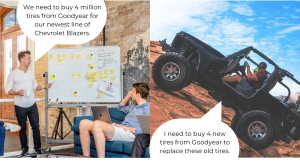
The consumer market for Goodyear may have more individual customers than the B2B market, but the volume per sale may be much greater for B2B. For example, an individual consumer may buy four tires in a single purchase, but GM may buy four million tires for the manufacturing of its Blazer vehicles in a purchase. While there may be hundreds of thousands of consumers in Goodyear’s US consumer target market, there may only be a couple dozen vehicle manufacturers (e.g., Ford, GM, Chrysler) in the US. Many of the major US automobile manufacturers are concentrated in the Midwest (e.g., Detroit), while individual US consumers are dispersed throughout the country.
Demand
The following is an example of derived demand. When the consumer demand for new automobiles increases, the demand for Goodyear tires also increases. The reason is because producing more vehicles for increased consumer demand requires tires to complete the manufacturing of each additional vehicle. Thus, the demand for B2B tires is derived from the demand for consumer vehicles.
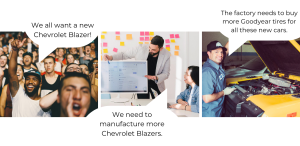
Nature of the Buying Unit
For the nature of the buying unit, the consumer may consult their household to make a purchasing decision regarding a set of tires, but rarely is the purchase decision made by more than one or a few people. On the other hand, GM likely has a buying center of people involved in a single Goodyear tire contract. The GM buying center for tires would include those who install the tires in the vehicles, managers who influence the purchase of tires for GM, upper management who may sign off on the decision on whether and what to purchase, procurement managers who actually make the purchase from Goodyear, and administrators who control tire buying information.
Types of Decisions
A tire purchase from Goodyear would likely be far more complicated than a consumer purchase. The contract may have a lot more details than a consumer contract, including multiple types and sizes of tires and complex delivery schedules.
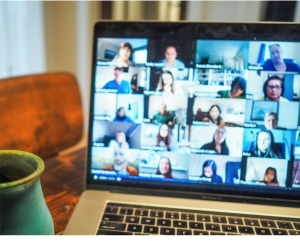

The Decision Process
The decision process is likely longer and more formalized for GM making tire purchases than the consumer decision process. For example, there may be formal proposals and presentations from Goodyear to the GM buying center and GM may be considering tire contracts from multiple tire manufacturers. The consumer may consider multiple brands for their tire purchase, but that evoked set is probably not as extensive as GM’s. Also, GM likely has an extensive procurement and purchasing process to make the tire decision happen. The consumer has fewer hurdles to get to a final tire purchase decision.
TYPES OF BUYING SITUATIONS
As noted, B2B buyers have a more complicated, longer and more formal buying process than the consumer market. B2B buying situations fall into one of three types: straight rebuy, modified rebuy, and new task (Armstrong and Kotler). The straight rebuy is when a repurchase is made without any changes or modifications to the order. The straight rebuy has the least amount of risk because there are the least amount of unknowns associated with the purchase. A new task purchase involves a completely new product or supplier purchase and involves the greatest amount of risk. Finally, a modified rebuy is a purchase in which there are modifications to the order, however, the purchase is not a completely new product or supplier.
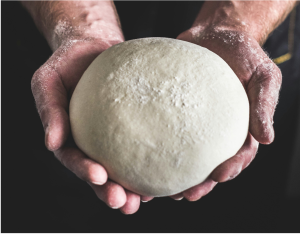

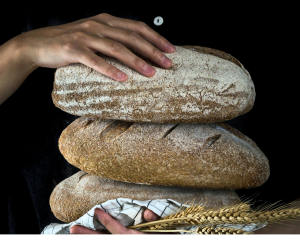
INFLUENCES ON THE B2B BUYING DECISION
There are multiple factors that can influence B2B decision-making: they are environmental factors, organizational factors, interpersonal factors, and individual factors (Armstrong and Kotler). Environmental factors include the economy, availability of supplies, technology, politics and regulations, competitors in the marketplace, and culture. Organizational factors are influences on the buying decision that are within the purchasing organization itself. These include company objectives, strategies, structure, systems, and procedures. Due to the multiple individuals involved in the buying center, there may be interpersonal aspects that influence purchase decisions, including influence, expertise, authority and dynamics. For example, a newer employee might defer to the opinion of a more senior employee with decades of experience instead of defending their own perspective as forcefully. Lastly, although B2B purchase decision-making is made on behalf of an organization, there are still individuals making the decision. Therefore, an individual’s age, education, job position, motives, personality, preferences, and buying style can all affect B2B decision-making.
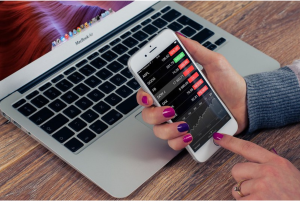


SUMMARY
As this chapter illustrates, the purchase process in B2B markets is quite different from that of B2C markets. B2B buyers generally buy more, through a more complicated and lengthy process than individual consumers, and are constrained by different buying situations. B2B buyers operate in concentrated markets; respond to derived demand; and its members purchase together, as part of a buying center. You are now prepared with the fundamentals surrounding these differences, which will be important as you seek jobs with B2B employers, or even if you are interested in starting a small B2B-related business.
REFERENCES
“Key Statistics on Professional Sales Education. Sales Education Foundation. 2023.
Weinberg, Peter & Lombardo, Jon. “This is the B2B century, and marketers will be the ones to lead it.” Marketing Week. https://www.marketingweek.com/b2b-century-marketing/. September 6, 2022.
Armstrong and Kotler. Principles of Marketing. Pearson. 2017.
Marketing Week. https://www.marketingweek.com/b2b-century-marketing/
Darby, Ian. “How B2B is reaching new heights of creativity.” The Drum. November 14, 2023. https://www.thedrum.com/news/2023/11/14/how-b2b-reaching-new-heights-creativity. September 6, 2022.
Media Attributions
- Header by Z. Farley
- Photo 1. Woman by Steven Ramirez, licensed under Public Domain. Photo 2. Microsoft by Mike Mozart, licensed under CC BY 2.0
- Photo 3. CarMax by Candy Beauchamp, licensed under CC BY 2.0. Photo 4. California Nat. Guard, licensed under CC BY 2.0
- Photo 1 by Austin Distel, licensed under Unsplash license. Photo 2 by Kenny Eliason, licensed under Unsplash license
- Photo 1 by Nicholas Green, Photo 2 by Jason Goodman, Photo 3 by Kenny Eliason. All photos licensed under Unsplash license
- Zoom by Chris Montgomery, icensed under Unsplash license
- Woman by Blake Wisz, licensed under Unsplash license
- Bread by Arturrro, licensed under Unsplash license
- Computer by by ThisisEngineering, licensed under Unsplash license
- Bread Stack by Mae Mu, licensed under Unsplash license
- Stock Market App on iPhone by Best Picko, licensed under cc by 2.0
- Office by LYCS Architecture licensed under Unsplash license
- Man by Kazi Mizan licensed under Unsplash license
A market in which individual consumers purchase goods and services from a company. Sometimes, this is referred to as “retail purchasing”
A market in which businesses purchase from other businesses
Organizations that purchase goods or services for use in the production, logistics, servicing, or resale of products, which are made for non-personal use
When a repurchase is made without any changes or modifications to the order. One of the three types of B2B buying situations
Involves a completely new product or supplier purchase and involves the greatest amount of risk. One of the three types of B2B buying situations
A purchase in which there are modifications to the order, however, the purchase is not a completely new product or supplier. One of the three types of B2B buying situations
